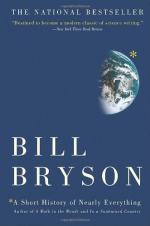
|
| Name: _________________________ | Period: ___________________ |
This quiz consists of 5 multiple choice and 5 short answer questions through Part 5, Chapter 20.
Multiple Choice Questions
1. What is a supernova?
(a) A dying star.
(b) A red giant.
(c) A young, emerging star.
(d) A white dwarf.
2. When radiation was first discovered, people thought it must have:
(a) High toxicity.
(b) Healthful properties.
(c) Been caused by thunderstorms.
(d) An extraterrestrial origin.
3. Compared to at sea level, oxygen at a few thousand feet above sea level is:
(a) Heavier.
(b) More plentiful.
(c) Purer.
(d) Thinner.
4. Photosynthesis was developed during the early history of life on Earth by what?
(a) Cyanobacteria.
(b) Xenobacteria.
(c) Flavobacteria.
(d) Magentobacteria.
5. In 1971, Mike Voorhies discovered an amazing fossil bed in Nebraska full of skeletons of prehistoric animals killed 12 millions years ago. How did they die?
(a) Inhaling ash spewed by a volcano.
(b) Frozen in a freak snowstorm.
(c) Infected by deadly bacteria.
(d) Drowning in a massive flood.
Short Answer Questions
1. What is an extremophile?
2. Of the available land on Earth, how much is suitable for people to live on?
3. According to Einstein's theories, what is the nature of space?
4. If all of the ice in Antarctica were to melt, by how much would ocean levels rise?
5. Who suggested that mass and energy are actually the same thing?
|
This section contains 234 words (approx. 1 page at 300 words per page) |

|




